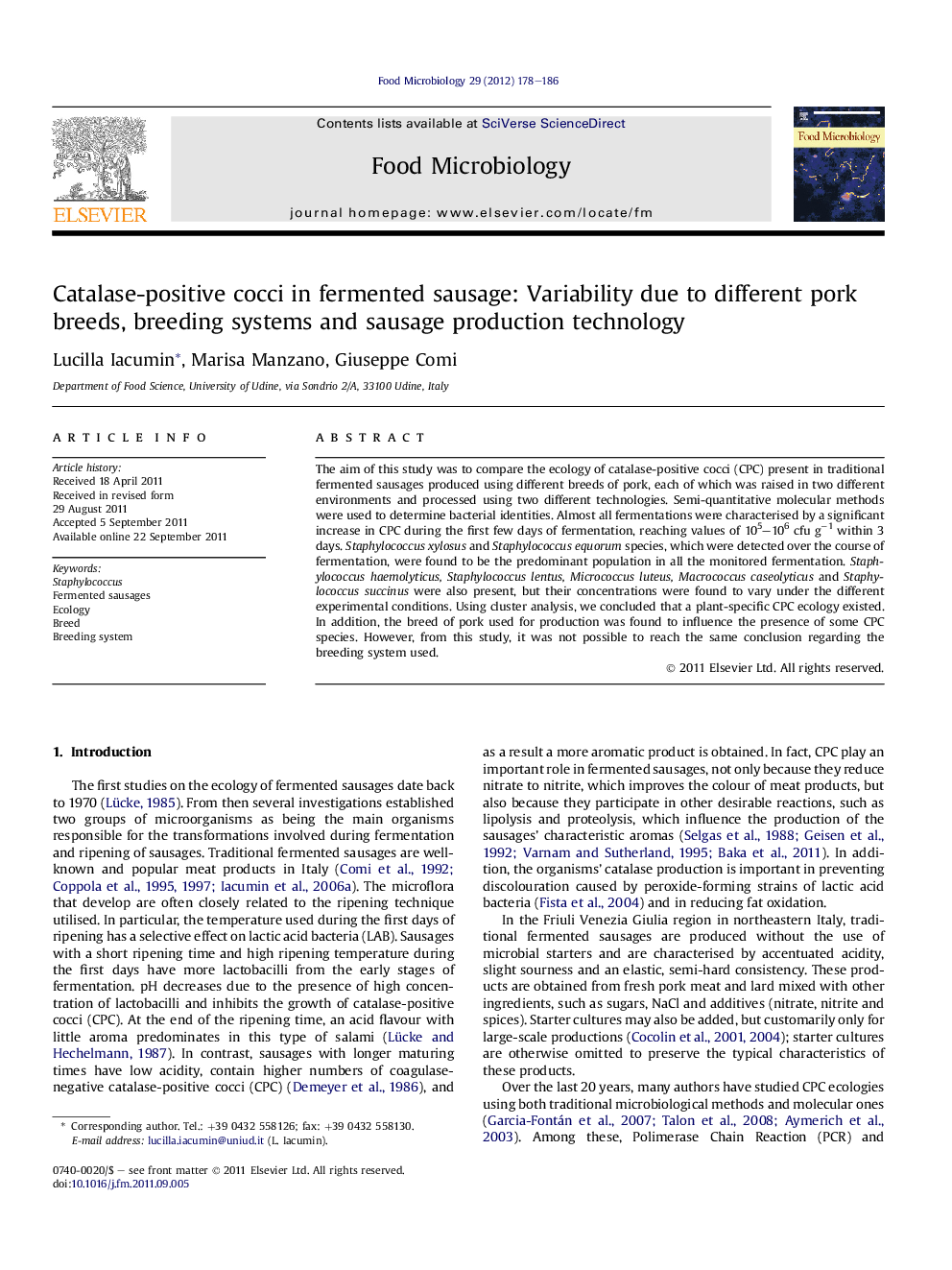| Article ID | Journal | Published Year | Pages | File Type |
|---|---|---|---|---|
| 4363078 | Food Microbiology | 2012 | 9 Pages |
The aim of this study was to compare the ecology of catalase-positive cocci (CPC) present in traditional fermented sausages produced using different breeds of pork, each of which was raised in two different environments and processed using two different technologies. Semi-quantitative molecular methods were used to determine bacterial identities. Almost all fermentations were characterised by a significant increase in CPC during the first few days of fermentation, reaching values of 105–106 cfu g−1 within 3 days. Staphylococcus xylosus and Staphylococcus equorum species, which were detected over the course of fermentation, were found to be the predominant population in all the monitored fermentation. Staphylococcus haemolyticus, Staphylococcus lentus, Micrococcus luteus, Macrococcus caseolyticus and Staphylococcus succinus were also present, but their concentrations were found to vary under the different experimental conditions. Using cluster analysis, we concluded that a plant-specific CPC ecology existed. In addition, the breed of pork used for production was found to influence the presence of some CPC species. However, from this study, it was not possible to reach the same conclusion regarding the breeding system used.
► Influence of breed of pork meat used for fermented sausages on CNCPC was evaluated. ► An industrial plant vs. artisanal plant was tested. ► PCR-DGGE from the colony collected in bulk from count plates was performed. ► Statistical analysis was done using Pearson and Cosine analysis with UPGMA. ► A plant-specific CNCPC ecology was found.
